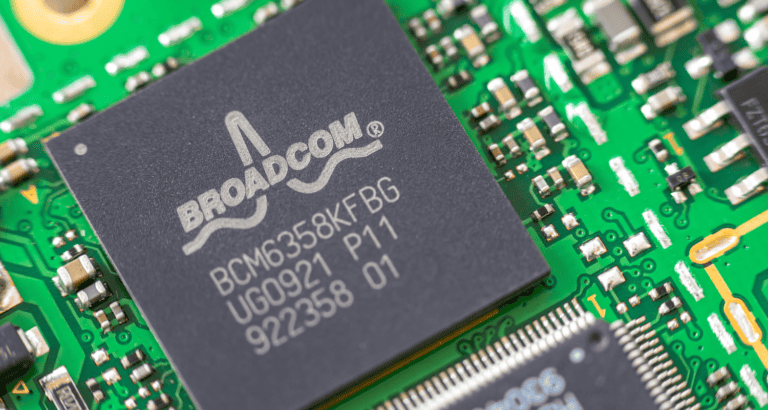Broadcom presents new chips, the Sian3 and the Sian2M. These chips allow data center managers to control their optical networks.
Optical networks are often used to connect servers in AI clusters. According to Broadcom, the new chips make such clusters more energy efficient and scalable.
Before data can be sent via an optical network, it must be converted into light. Once it arrives at its destination, it is converted into electrical signals that servers can process. This conversion is done via pluggable transceivers, devices that data center managers attach to their network switches, SiliconANGLE explains.
Broadcom’s new Sian3 and Sian2M chips are designed to control pluggable transceivers. According to the company, the chips can process up to 1.6 terabits of data traffic per second. Broadcom also promises better energy efficiency than previous generations of chips.
The Sian3 is the more advanced of the two and is based on a 3-nanometer production process. This chip is intended for transceivers controlling SMF fiber optic cables. SMF is a network technology for long distances and can send data between miles apart systems.
Fast transmission of information between servers
SMF can be used within a data center to send information between servers in different building parts quickly. The technology is also suitable for traffic between data centers. Broadcom claims the Sian3 SMF connections process 20% more energy efficiently than previous chips.
The second new chip, the Sian2M, is intended for network connections based on MMF technology. Where SMF focuses on long distances, MMF is designed for short fiber optic cables. This technology is suitable for connecting AI servers located right next to each other, for example.
Under the hood, SMF and MMF process data differently. An SMF fiber cable contains a single glass fiber that supports a single light wavelength, while an MMF cable contains multiple glass fibers that can process different wavelengths. MMF-based equipment generally takes up more space and is cheaper.
The MMF-based Sian2M is built with 5-nanometer technology. According to Broadcom, this chip contains an integrated VCSEL laser emitter that generates light beams for data traffic via fiber optic cables. Transceiver manufacturers no longer need to add a separate laser, simplifying the hardware design. Broadcom indicates that the Sian2M shares multiple functions with the 3-nanometer Sian3.
Both chips contain a retimer module. The longer data is in transit via a fiber-optic network, the greater the chance of errors. Retimers can intercept and replace the data with a new, error-free copy to prevent technical problems.
Error correction technology
Both chips support an error correction technology called FEC to further increase network reliability. This involves sending a piece of data multiple times. If one of the copies contains an error, the other copies can be used for processing. Broadcom is currently supplying the Sian3 and Sian2M to a select group of early customers.
